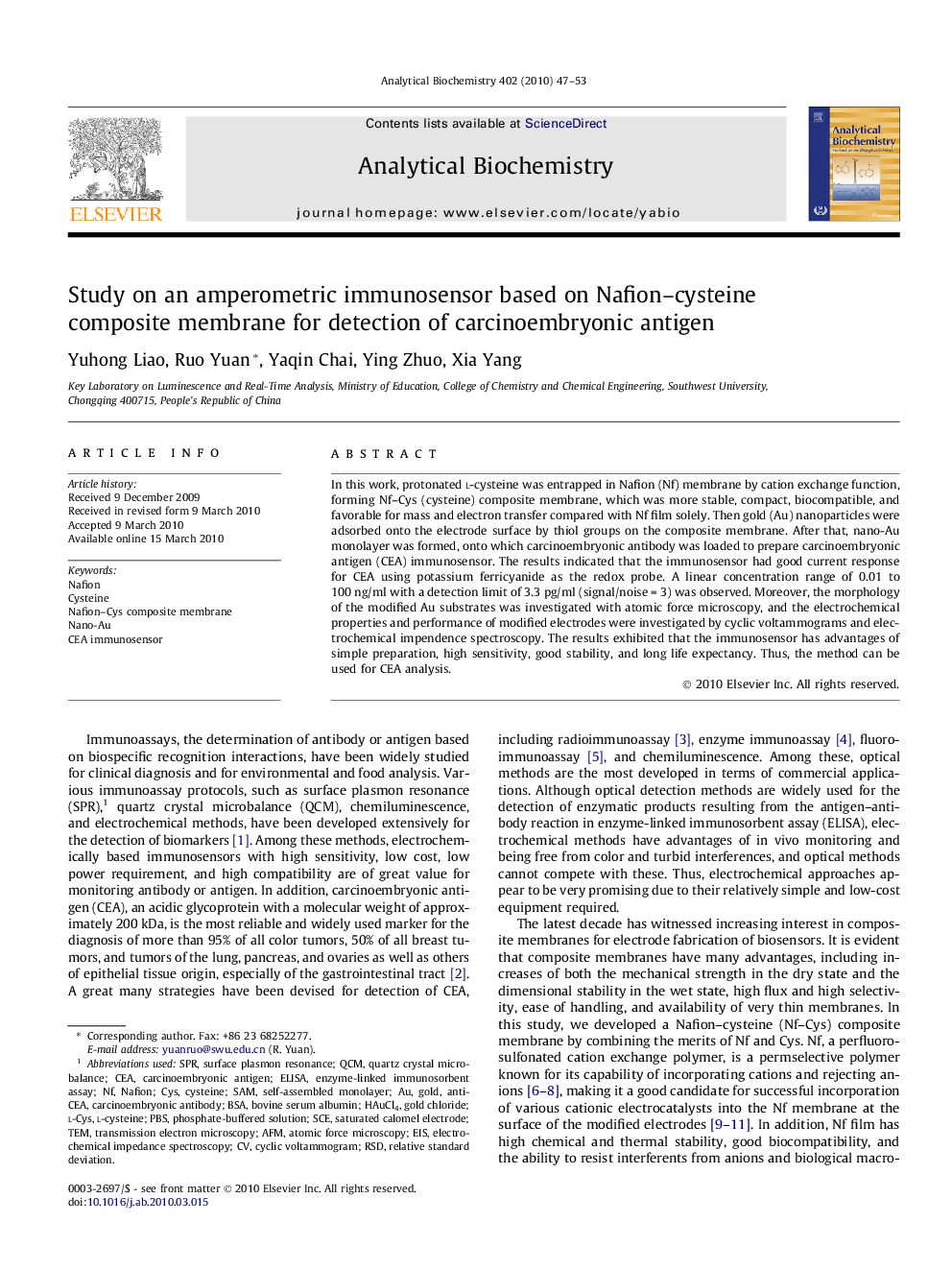| Article ID | Journal | Published Year | Pages | File Type |
|---|---|---|---|---|
| 1174616 | Analytical Biochemistry | 2010 | 7 Pages |
In this work, protonated l-cysteine was entrapped in Nafion (Nf) membrane by cation exchange function, forming Nf–Cys (cysteine) composite membrane, which was more stable, compact, biocompatible, and favorable for mass and electron transfer compared with Nf film solely. Then gold (Au) nanoparticles were adsorbed onto the electrode surface by thiol groups on the composite membrane. After that, nano-Au monolayer was formed, onto which carcinoembryonic antibody was loaded to prepare carcinoembryonic antigen (CEA) immunosensor. The results indicated that the immunosensor had good current response for CEA using potassium ferricyanide as the redox probe. A linear concentration range of 0.01 to 100 ng/ml with a detection limit of 3.3 pg/ml (signal/noise = 3) was observed. Moreover, the morphology of the modified Au substrates was investigated with atomic force microscopy, and the electrochemical properties and performance of modified electrodes were investigated by cyclic voltammograms and electrochemical impendence spectroscopy. The results exhibited that the immunosensor has advantages of simple preparation, high sensitivity, good stability, and long life expectancy. Thus, the method can be used for CEA analysis.
